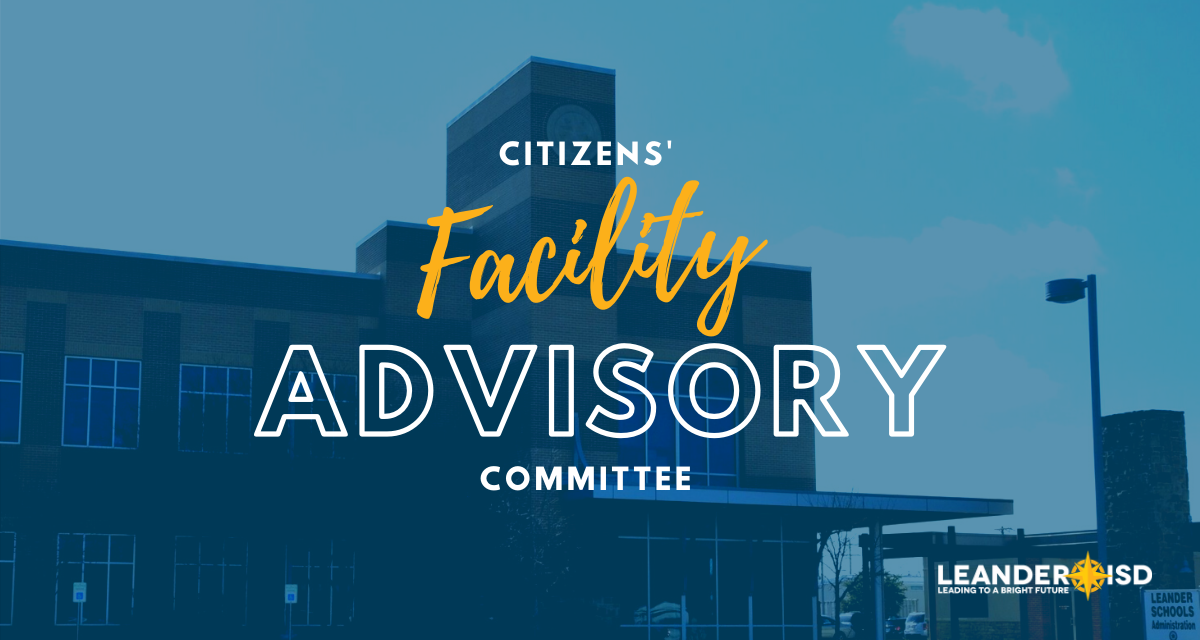With all the projects on the table and considered, a community committee charged with proposing projects of the district’s next bond election, the group of community representatives took a deep dive on plans for high schools and technology infrastructure during their June 1 meeting.
With about two weeks to go before submitting its recommendation to the Board of Trustees, the Citizens’ Facilities Advisory Committee (CFAC) is looking to fund essential projects for supporting rapid enrollment growth, the maintenance needs of aging campuses, and the technology devices and infrastructure to support learning, in addition to projects to provide additional enhancements to existing facilities.
A 150-member CFAC presented $1.5 billion in potential projects, covering elementary, middle, and high schools, as well as ancillary or support services and technology, to a steering committee about four weeks ago, jump-starting the evaluation and prioritizing of the most needed projects.
Recap the committee’s work
- May 26, 2021 – Community Considers Elementary School Projects, New Technology for a Future Bond Election
- May 24, 2021 – Committee Considers Schools of Choice, Programs to Address Crowding in a Future Bond Election
- May 17, 2021 – Rapid Growth Frames a Potential Bond Election
- May 11, 2021 – Community Committee Reviews and Presents $1.5 Billion in Capital Projects for Possible Future Bond Election
Schools of Choices takes center stage as the committee considers plan for high schools
The district will grow by 7,814 new students by 2026, according to a demographer’s report of local real estate sales and new housing construction. In that growth, 1,298 new students will come to high schools, which pushes Glenn High School to nearly 3,000 students and Vista Ridge High School with its 2,400 building capacity serving almost 2,800 students.
The district presented more details on Schools of Choice, specialty programs offered in small high school settings to meet a targeted industry need or academic service. Committee members asked questions about the ability of SOC to relieve crowding at high schools, the impacts SOC has on minimizing the need to re-zone attendance zones for existing schools, and the details for operating a SOC.
Assistant Superintendent of Pathways and Innovation Chrysta Carlin shared details about an Early College High School program, where students enter a small school (400 – 500 students) with a focus on earning two years of college credit or an associate’s degree alongside their high school graduation. ECHS which is a program that exists in several area districts is supplemental to a district’s existing dual credit program. If the plan goes through to construct additional SOC facilities, the district would move New Hope High School into a new facility, bringing the credit acceleration and recovery program onto a modern facility, as well as additional programs to match the needs for regional workforce needs, including medical professions and Science Technology Engineering Mathematics (STEM) industries.
The committee supported the idea to build a complex to move New Hope HS to a new building as well as an additional school of choice and an Early College HS on the Austin Community College San Gabriel campus in Leander.
Tech experts analyze technology infrastructure plan
In order to better understand the technology infrastructure needs for the district, Chief Technology Officer Jason Miller provided details around a Broadband Network Node, which is a backup site to “share the load” on the district’s bandwidth usage, adding resiliency, and creating faster and more reliable service for teaching and learning. The Node would be located in a warehouse facility on the Grandview Hills Elementary School campus, minimizing the cost for real estate and construction of a new facility.
Committee members, many of whom brought professional experience in the tech and broadband industry, asked tough questions to better understand the scope, scale, and cost savings for the district to construct its own facility versus leasing a service.
Explaining the Finances
For LISD, the best option for funding school construction and major renovation projects is through the issuance of voter-approved bonds in order to maximize other funding sources for paying teachers, providing instructional resources, and managing the day-to-day expenses for operating schools.
State law compresses the tax rate for Maintenance and Operations (M&O) tax collections as property values rise. This tax rate compression caps the funding available for teacher and staff salaries and operations on an annual basis. In contrast, increases in property values generate more tax collections on the Interest and Sinking (I&S) or debt service side. This provides additional capacity on the debt side and the ability to fund future bond issues with no increase in the tax rate. This shift in funding requires the district to reconsider how large renovation or maintenance projects are funded.
Texas school districts use their Interest and Sinking (I&S) or debt service tax rate to pay for bonds issued to build new facilities, purchase capital equipment, and maintain existing facilities. The state of Texas provides limited assistance to school districts for funding facilities through the EDA and IFA programs for which LISD does not qualify due to the level of property values within the district.
Committee to continue work on Thursday, June 3
The 24-member community leadership group, CFAC, will work over the next few weeks to build a report for the June 17 Board of Trustees meeting. If the district decides to call a bond election for November, the Board would need to take action by August 16.
The CFAC committee will meet on Thursday, June 3 to continue prioritizing projects for its proposal.


